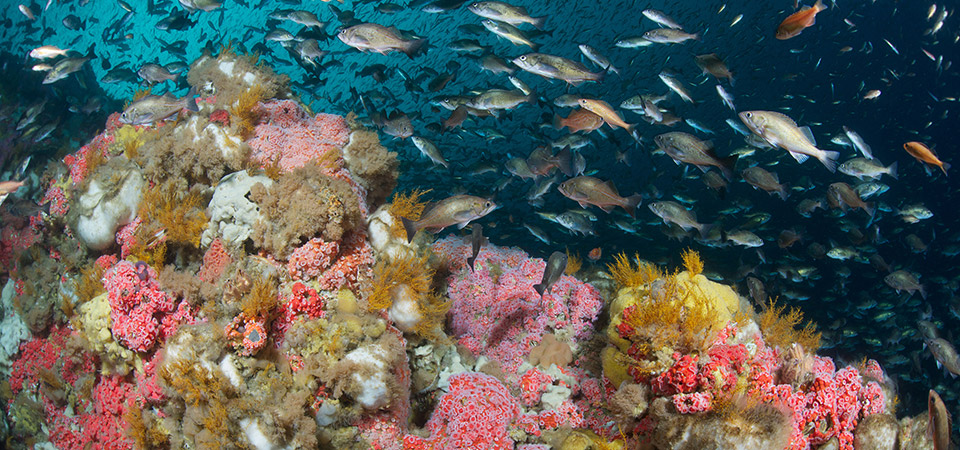The Bank

Cordell Bank, the center piece of the sanctuary, is an offshore rocky bank roughly 4.5 miles wide by 9.5 miles long covering an area of approximately 26 square miles.
A proportion of Cordell Bank is made up of granite reef, but much of the bank is a mixture of rock reef, boulders, cobbles, sand and mud. The diversity of the bank and its variety of habitats are important contributors to the diversity of fishes and invertebrates found on this living reef. For example, sponges, corals, sea squirts, anemones and hydroids compete for space on the upper-reef areas. More mobile animals like decorator crabs, sea stars, sea cucumbers, snails and groundfishes move over the invertebrate carpet. Invertebrate cover on the upper reef areas exceeds 100 percent, as animals are layered one on top of the other. The bank also provides critical habitat for first-year juvenile and adult rockfishes, lingcod and other benthic fishes.
The location of the bank contributes to the productivity of the surrounding marine environment. The bank is located on the edge of an underwater peninsula and is surrounded by deep water on three sides. Data suggest that, as deeper water encounters the base of the bank on the northern edge, the water mass moves up and over the bank. This produces upwelling events that deliver nutrient rich water that fuels production of phytoplankton and subsequently zooplankton that feed the fish, seabirds, marine mammals and invertebrates communities found around the bank and in the sanctuary.
For more information on the bank and the research being conducted on this topic, please visit the Sanctuary Integrated Monitoring Network (SIMoN).

